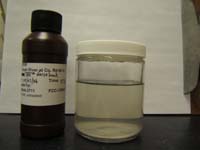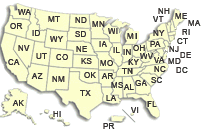Minnesota Water Science Center

Emerging Contaminant and Endocrine StudiesMinnesota PROJECTSUSGS IN YOUR STATEUSGS Water Science Centers are located in each state. 
|
Fate and Effects of Alkylphenols and other Endocrine Active Chemicals in Three Minnesota StreamsThe U.S. Geological Survey (USGS), the Minnesota Pollution Control Agency, and St. Cloud State University conducted an integrated chemical and biological study of three streams (South Fork Crow River, Redwood River, and Grindstone River) that receive wastewater in Minnesota. The objective of the study was to identify distribution patterns of endocrine-active chemicals and other organic chemicals indicative of wastewater, and to identify fish responses in the same streams. Endocrine-active chemicals are a class of chemicals that interfere with the natural regulation of endocrine systems, and an understanding of their distribution in aquatic systems is important so that aquatic organism exposure can be evaluated. The USGS collected and analyzed water and quality-assurance samples and measured streamflow during six sampling events in each of three streams. Water samples were collected upstream from and at two successive points downstream from wastewater-treatment plant (WWTP) effluent discharge and from treated effluent from February through September 2007. Bed sediment samples were collected during one sampling period at each of the stream locations. Water and bed-sediment samples were analyzed for endocrine-active chemicals including alkylphenols, alkylphenol polyethoxylates, and nonylphenol ethoxycarboxlylates (NPECs). Water samples were also analyzed for major ions, nutrients, and organic carbon. In addition, as part of an intensive time-series investigation, the USGS staff collected daily samples for 8 weeks from the Redwood River near Marshall, Minn., for analyses of total alkylphenols and atrazine. St. Cloud State University staff collected and analyzed fish to determine male fish responses at all water sampling sites and at an additional site near the wastewater-treatment plant effluent discharge to these streams. Male fish responses included the presence and concentration of vitellogenin in plasma, gonadosomatic indices, and histological characterizations of liver and testes tissue. Lee, K.E., Schoenfuss, H.L., Jahns, N.D., Brown, G.K., and Barber, L.B., 2008, Alkylphenols, other endocrine-active chemicals, and fish responses in three streams in Minnesota-Study design and data, February-September 2007: U.S. Geological Survey Data Series 405, 44 p. plus appendixes. Writer, J.H., Ryan, J.N., Keefe, S.H., and Barber, L.B., 2012, Fate of 4-nonylphenol and 17?-estradiol in the Redwood River of Minnesota: Environmental Science and Technology, v. 46, p. 860-868. |